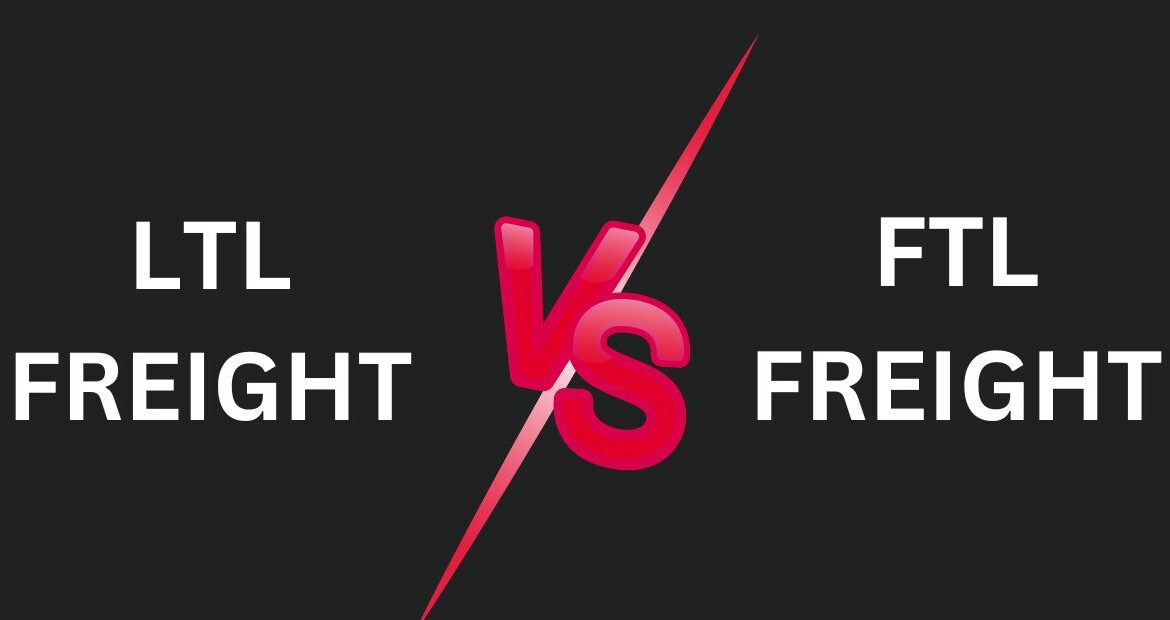
Transporting goods is more than just loading and unloading at the beginning and end of the journey. It also includes picking the right method of transportation (air, land, or sea), picking the right carrier or freight shipping company, and thinking about many other things to ensure the transportation goes quickly and cheaply.
The trucking business moves most of the overland freight in the United States by road. You can roughly divide truck packages into two groups: FTL (Full Truckload) and LTL (Less than truckload).
What do these two mean? How do you pick the best one for your next shipment of goods? What’s the difference?
Read our blog Understanding Internal Mobility and Why It Is Important
What is LTL VS FTL shipping?
Less-than-Truckload (LTL): Takes separate packages from different companies and puts them all on one truck. The shipper pays based on how much room their goods take up on the truck. LTL is best for sending packages that are too big to send as packages but don’t fill up a whole goods truck.
Full Truckload (FTL): This type of freight is bigger and takes up the whole trailer. The buyer pays to use the whole truck. Moving freight from one shipper to a single destination is what FTL freight shipping is all about. When you want a truck just for your things, FLT is great.
Key Difference
Cost Effective
The main difference between LTL and FTL is that when you move only a few pallets at a time, LTL saves you more money. Instead of paying for a full truck that isn’t full, this is cheaper for you because you only pay for the room you use. To stay efficient, LTL carriers have to fill up the extra space on their trucks with other shipments. This way, they can get as close as possible to making the most of the space they have.
Size
The names “Full Truckload” and “Less Than Truckload” are clear and mean what they say. LTL packages are smaller ones, usually between 100 and 5,000 pounds. These smaller shipments won’t fill up a whole truck, so there will be room for more small shipments.
On the other hand, moving goods by FTL usually takes up a whole truck and is much bigger, weighing 20,000 pounds or more. Sometimes, shipments that weigh between 5,000 and 10,000 pounds can be moved either LTL or FTL.
Delivery Speed
Most of the time, FTL is faster because it doesn’t have to wait for trailers to be filled and goes straight to its location. Like with LTL, more stops and loading and unloading mean a longer arrival time. It might make more sense to use LTL if you care less about speed and more about cost.
Transit Route
In FTL, the truck picks up the item and goes straight to the recipient. The route of the journey is usually clear and planned ahead of time. The driver will usually get to the target at the scheduled time unless something goes wrong with the equipment. The total mileage, hours of service, stated speed limit and expected traffic all play a role in figuring out this time.
Most of the time, LTL takes longer than FTL to move things. Plus, these delivery prices are just guesses, not set prices. A lot of LTL companies say that their service levels are above 90%. But they can be different for each lane and provider.
Reweighing for Accuracy
In FTL shipping, the driver may stop at a scale once the package is full to make sure the truck weighs less than 80,000 pounds. Aside from that, there isn’t often a chance to check any other products. However, LTL haulers check the weight of goods more than once at different stages. First, the carriers check the goods at the original port, where they go through a device that scans pallets to make sure they are the right size and weight. If the results don’t match what’s written on the bill, the package will be weighed again.
Environmental Impact
The more environmentally friendly choice is LTL because it is consolidated. An LTL truck always has goods on board, and because LTL shipments are so widespread, there are never any empty miles between loads. On the other hand, FTL can make more waste because the whole truck may not be used. After all, it is only used by one customer.
Equipment and Additional Services
Lastly, the technology is what makes FTL and LTL different. When movers compare LTL and FTL, a full truckload gives them more choices. It’s hard to find room on a reefer for LTL shipments, so FTL is your best bet if you need one for temperature-controlled packages. When it comes to shipping, FTL can handle any type of goods, but LTL is mostly about dry vans.
Bottom Lines
There are pros and cons to both LTL and FTL shipping methods. Which one to use depends on several factors, such as the size of the package, the cost, and the time frame for delivery. Business owners need to think about their shipping needs and pick a delivery method that works for them.
It is important to always work with a reputable service that has a history of getting things to people on time and in good shape. Universal Relocations has the resources, shipping tools, carrier partnerships, and experience you need to ship your goods, whether it needs a full truckload or less-than-truckload service. Start your journey into LTL and FTL freight today by getting a free custom shipping estimate from Universal Relocations.
FAQs
What does Freight Class mean?
Your shipment’s Freight class, which is usually based on its weight, density, worth, and packaging, is a number that tells you how to ship and store it. If the carrier knows your goods class, they can figure out which way of delivery is best for you. This is how goods haulers work to make sure that goods get to their destinations quickly and cheaply for retailers.
How is the LTL calculated?
LTL rates are normally computed on a weight-based scale. Pricing is based on a unit of measurement called the hundredweight (CWT), sometimes known as the centum weight. The higher the weight of a shipment, the lower the fee per hundred pounds.
What does Partial Truckload (PTL) mean?
PTL is in the middle of FTL and LTL. In this case, the same truck picks up and delivers the goods, and along the way, other packages are added. To be considered a partial load, a package must have 5 to 14 pallets that weigh between 5,000 and 40,000 pounds each. When compared to FTL, it costs more but less than FTL.

 800-13-7356
800-13-7356
